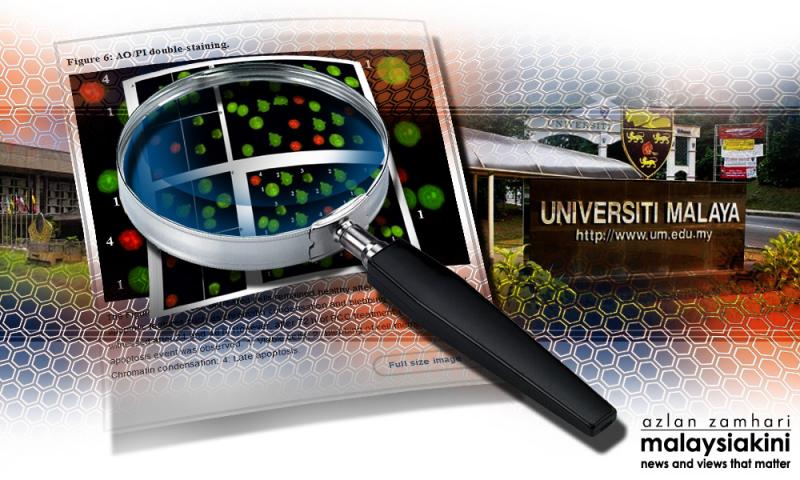The Higher Education Ministry and Universiti Malaya (UM) will investigate allegations of research fraud involving a group of UM faculty of medicine researchers.
The Star quoted minister Idris Jusoh saying that he would personally look into the matter.
“We do not compromise on such matters, and we would make sure action will be taken against them because we have to uphold the integrity of our education system,” he said.
The daily also quoted UM’s international and corporate relations director Evelyn Khor saying that the university has formed an ad hoc committee to investigate the allegation.
The allegations of fraud exploded over social media in the past week, and was subsequently picked up by the mainstream scientific press.
The allegations pertain to three separate papers, which were published in the peer-reviewed journals Scientific Reports, Frontiers in Pharmacology, and PeerJ, this year.
It was alleged that the researchers had duplicated the images of cells in the photos contained in their research articles, making it seem as though there were more - albeit identical-looking - cells.
On June 10, PeerJ posted an ‘expression of concern’ to accompany the article posted on their website.
“Questions have been raised about some aspects of the figures in this manuscript. This expression of concern will remain in place while PeerJ staff investigate this matter further,” it read.
Retraction Watch - a prominent blog that tracks issues such as journal article retractions and academic fraud - had quoted one of the articles’ authors denying allegations of fraud.
Same stage of development
Referring to the paper published in Scientific Reports, UM researcher Nima Samie reportedly said that the images of the cells were the same because they were in the same stage of development.
“Of course cells in each step should be same with each other. For instance, all cells which underwent blebbing must be same until they confirm as blebbed cells based on morphology of the cells.
“This test is 100 percent based on morphology of cells only… They cannot be copy-pasted cells but morphology is same,” the researcher was quoted as saying.
To a question on why the cells looked exactly the same, the researcher reportedly said, “With respect to others opinion but of course they should be same because they are in same stage of apoptosis.
“If different, they cannot be considered as same category. We tried to capture the best images until most of the cells in each stage be same to each other so we could show at least enough number of cells are present to be reported, not only one or two cells.”
Nima is named as the first author of all three papers.
According to the acknowledgements in all three papers, the research was funded through a grant from UM and the Ministry of Higher Education, and another grant from the Postgraduate Research Fund.
The paper in Scientific Reports pertains to liver cancer cells that died when exposed to a chemical that the research group was testing.
Apoptosis refers to cell death, while blebbling is a phenomenon observed in cells during its death.





